New Orleans is one of the few places in the world where walking the streets at all hours consuming alcohol from an open container is not just allowed, but actively encouraged. This is party city USA. Bars shut only when the last customer leaves, and will gladly sell you drink to go – and while that used to be, generally, cocktails such as the take-away daiquiri, or the infamous Hand Grenade (equal parts vodka, rum, gin, melon liqueur and pure grain alcohol, with a dash of pineapple juice, served in a hand grenade-shaped vessel), since a change in the law two years ago, that drink is increasingly likely to be a local craft beer.
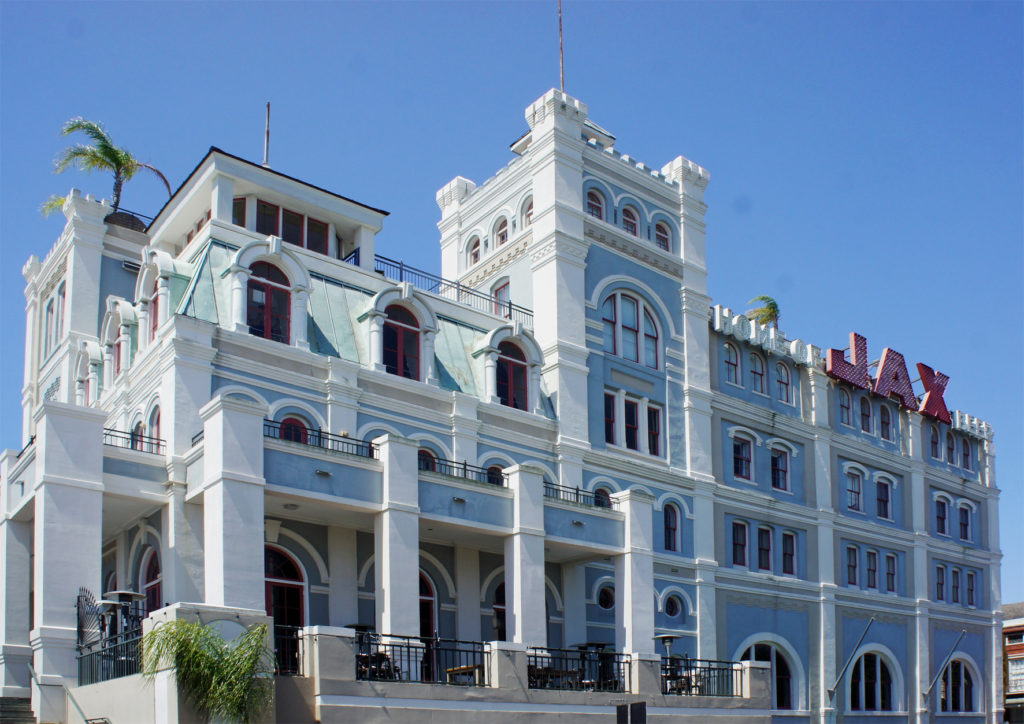
I was in Louisiana ostensibly for a music tour: the first weekend of the New Orleans Jazz and Heritage Festival, and then a trip out to the south-west of the state, where settlers expelled by the British some 260 years ago from Acadie, the French colony on the Atlantic Canadian shore, eventually settled and became known as Cajuns. The plans included an open-air Cajun crawfish boil, with music from masters of Cajun song and dance. But there was enough free time to fit in plenty of beer tourism as well, and multiple places to choose from. Louisiana may have almost the lowest number of breweries per head of any state in the union (only neighbouring Mississippi is worse), but the world brewery boom has not completely passed it by. The state now has 30 craft breweries, three times more than in 2010, and New Orleans is home to nine of them, after losing its only surviving large brewery, Dixie, to the floods caused by Hurricane Katrina in 2005 (The Jax brewery had closed in 1974). What is more, since New Orleans is one of the top eight tourist destinations in the United States, at least a couple of operators have started organising minibus tours taking in several local breweries at once, reckoning that the huge growth in interest in craft beer makes for a potentially lucrative niche alongside the other organised tourist attractions, such as paddlesteamer trips along the Mississippi and visits to spooky cemeteries and antebellum plantations.
You have to be prepared to be flexible here, since beer tourism is still at the toddler stage, and if not enough people book a tour, it will be cancelled at almost the last minute, which is what happened to one trip I had organised before I arrived in New Orleans. But I still managed to get to see eight different breweries, or more than a quarter of all that Louisiana offers, AND hear some wonderful music AND eat some fantastic food AND see some amazing, beautiful sights AND get soaked almost to my underpants in one of the drenching hours-long thunderstorms New Orleans is prone to.
That was a low point, after I got on the wrong streetcar (none of which go to Desire any more) and had to cross roads flooded up to nine inches deep to try to get to where the jazz festival was taking place. Or wasn’t: lightning had knocked out the electricity supply, and that day, it opened hours late.
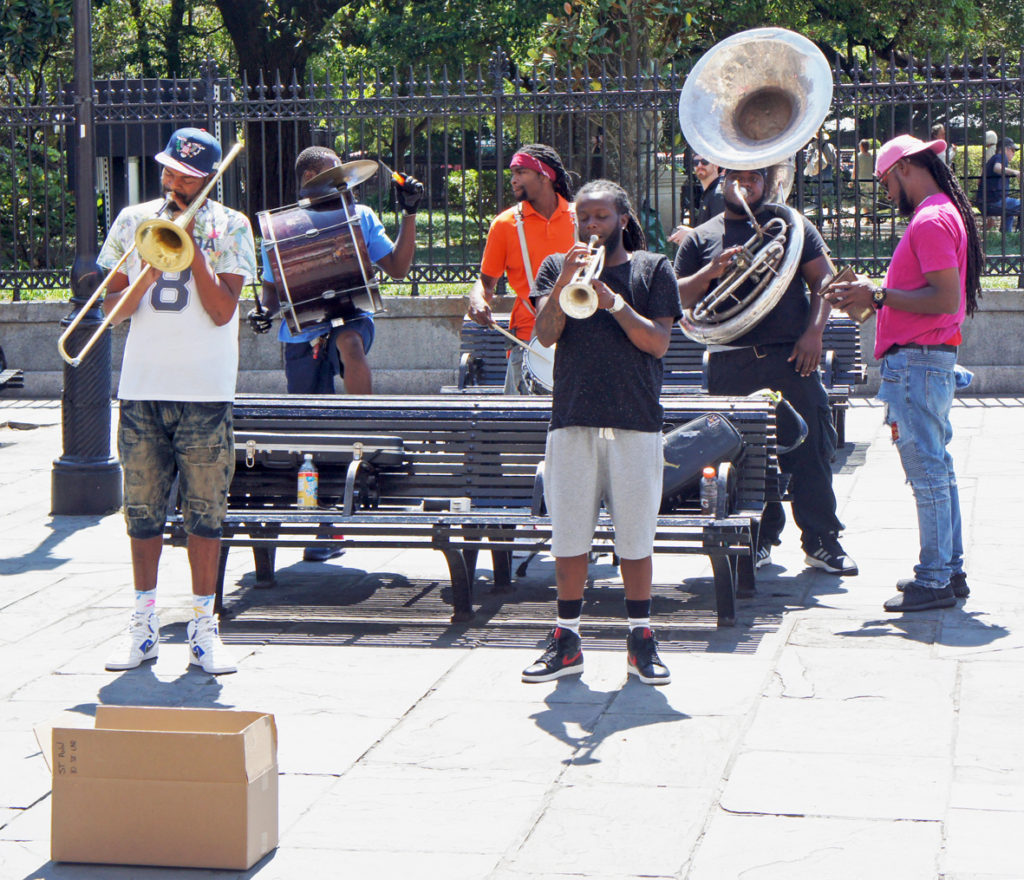
Still, there were plenty enough highs: multiple opportunities to hear superb street jazz from young musicians clearly hugely in love with the traditions they are helping to keep alive; stuffing my face with oysters in the Chimes, a restaurant and tap on the Bogue Falaya river at Covington, on what New Orleaners call the “North Shore”, the other side of Lake Ponchartrain, which lies to the immediate north of New Orleans itself; watching roseate spoonbills, pink from all the shrimp they eat, and big, ugly alligators hunting prey, and egrets, and owls, and turtles, from a flat-bottomed pirogue on Lake Martin (and wondering, when we ran onto a submerged stump and became stuck, if the alligators might soon be hunting us – fortunately another boat pulled us off); eating jambalaya and crawfish pie at the jazz festival, and trying not to embarrass myself by singing Hank Williams; learning how the flooded rice fields of the Louisiana prairie are used to grow two crops of rice and then a third “crop” of crawfish, which today brings in more money than the rice does; seeing, and rocking to, the fabulous Rebirth Brass Band at a bar in Frenchmen Street; eating and rocking at a barbecue and barn dance aon the farm of the zydeco band leader and accordion player Geno Delafose; admiring the cooking skills of the solemn, dignified, elderly Cajun gentlemen, their long-sleeved shirts carefully buttoned despite the heat (New Orleans is further south than Cairo), running the open-air crawfish boil at the countryside home of Mark and Ann Savoy near Eunice, in the centre of south-west Louisiana, as they lowered baskets of live crawfish into steaming vessels the size and shape of a domestic hot water tank and then poured in pounds of paprika and other spices, from mace to cinnamon to cloves, before swooshing the cooked crawfish out onto long tables, to be urgently deshelled by the hungry and eaten with boiled potatoes and corn on the cob; and dancing two-steps and waltzes (badly, on my part: “don’t look at your feet,” they said, but if I didn’t look at my feet I had no idea at all what I was doing) under a Louisiana moon and the influence of beautiful beer and excellent food while the Savoy family and their friend Michael Doucet, fiddle player fantastique, performed for their own enjoyment as well as for us.

The best of the brewery visits was undoubtedly Abita Brewing, though most of this was down to Abita’s brewing director, Jaime Jurado. Jaime is North America’s Derek Prentice – indeed he actually worked with Derek at Truman’s in Brick Lane, part of a peripatetic career in brewing that has included stints at Smithwick’s in Kilkenny, a brewery in Bavaria, and one in Rajasthan, India, as well as brewing sites across the US. Jaime and I have been “internet pals” for years, but we had never actually met, until I discovered I could book a brewery tour that included a visit the Old Rail pub brewery and then to Abita, which requires a trip over the 24-mile-long Lake Pontchartrain Causeway, the longest continuous bridge in the world.
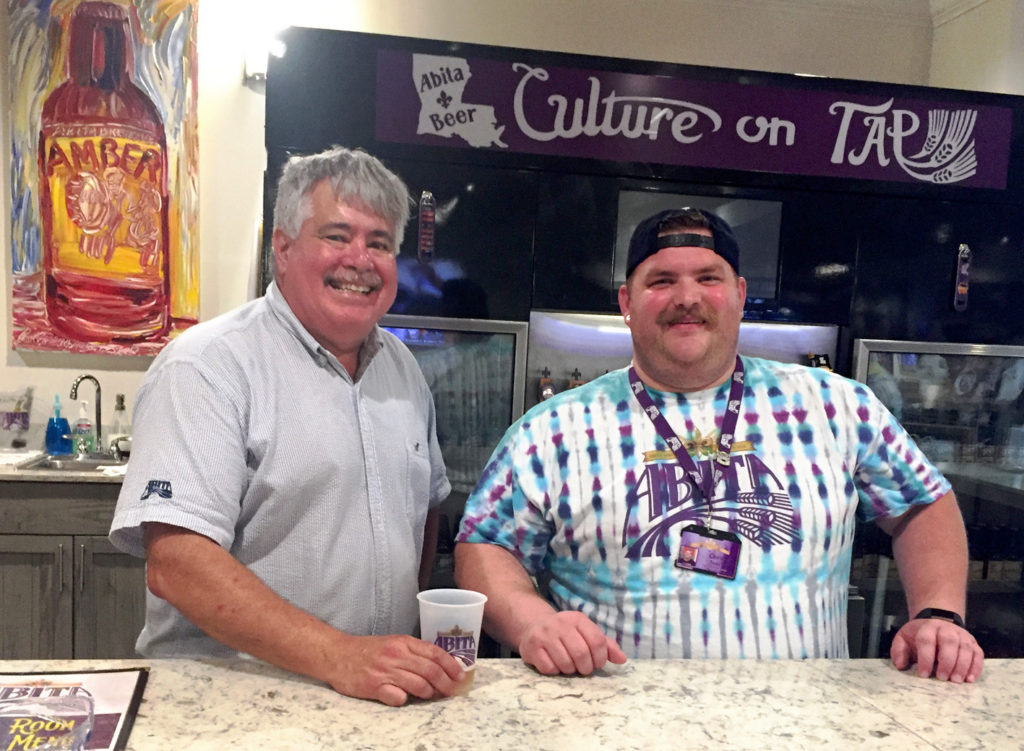
When I emailed him to say: “I’m coming out to your brewery!”, Jaime immediately offered to take me to dinner. Better than that, he also gave me my own private tour of the brewery, now Louisiana’s oldest (having been founded as a brewpub in 1986) and the 23rd largest in the US, introduced me to brewery president, David Blossman, and took me to see the original Abita brewhouse, and also the nearby (and considerably smaller) Covington brewery, and returned me back to my hotel in the French Quarter with a full goodie bag. I’ve never had a conversation with a brewer that I haven’t enjoyed enormously, and Jaime is a great companion for a night out, and a fine raconteur. Abita’s home town is called Abita Springs, and the brewery uses the local spring water for all its beers, completely unaltered. The “springiness” can cause problems: when the brewery decided to extend its warehouse, it put down a new concrete floor and then couldn’t work out what was causing the concrete to break up. An expert was called in, who declared that a spring had opened up underneath the concrete, and the water pressure was causing the floor to fracture. A pipe had to be put in to carry the spring water away to what is now the brewery turtle pond.
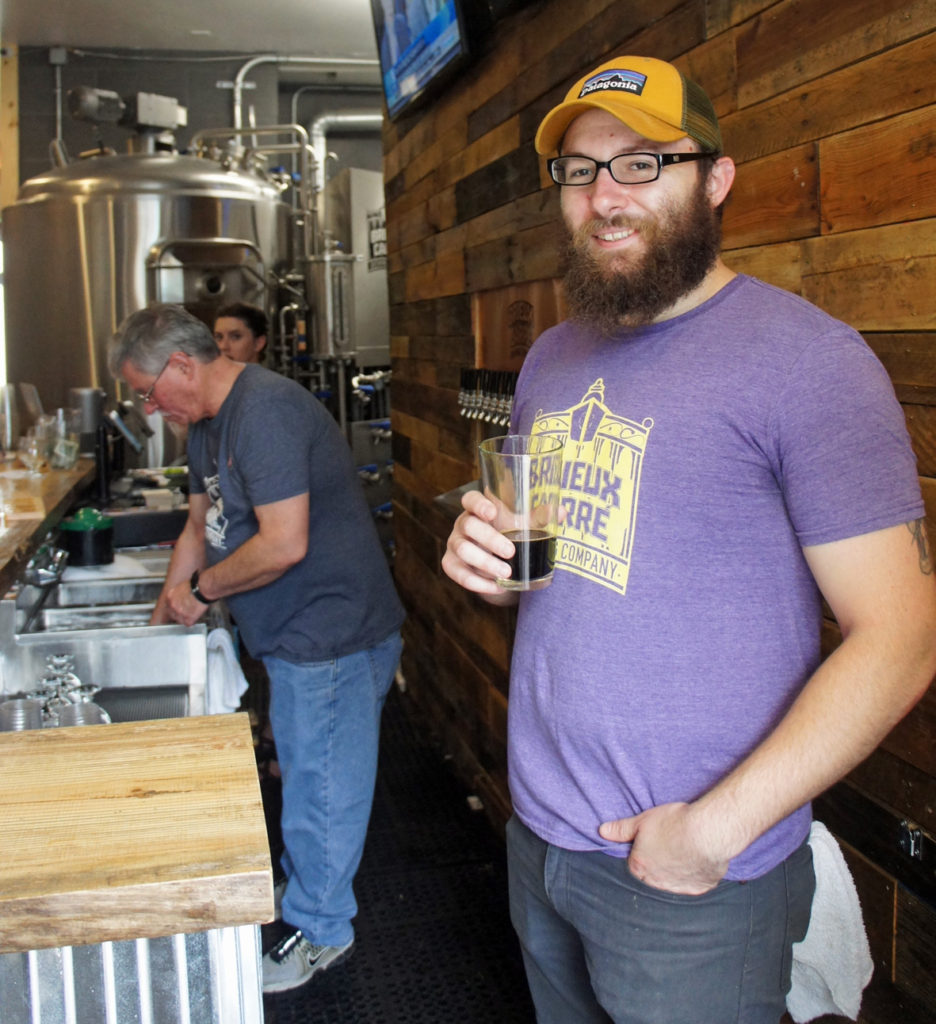
The next day I got to see Louisiana’s youngest brewery, at least at the time of visiting: another start-up was due within weeks. The brewery name, Brieux Carré, pronounced “broo carray”, is a pun on the name in French of the old core of New Orleans, Vieux Carré (literally “old square”), pronounced in Louisiana French “voo carray”. The brewery’s existence is possible only because of a change in the law in Louisiana. Until two years ago, any brewery had to get no more than ten per cent of its beer sales from its own tap, which for any start-up was a huge hurdle to try to vault. That restriction was removed in 2015, and local breweries can now have 100 per cent of sales through their own taproom. Of course, there were other hurdles to clamber over before Brieux Carré served its first pints, not the smallest being finance. Co-founder Robert Bostick, a home brewer for ten years before going professional, told me: “Nobody wants to give a 24-year-old half a million dollars just because he likes beer.” However, he and his business partner, Taylor Pellerin, managed to get $450,000 through a microfinance scheme, which bought them a seven-barrel brewing kit made by a local manufacturer, the Craft Kettle Co of New Orleans. They found premises zoned for a microbrewery just on the edge of the Vieux Carré, thus justifying the name they had already thought up, and the pair are now selling all the beer they brew from their on-premises tap, to a customer base, Bostick says, that ranges from “21 to late 70s”.
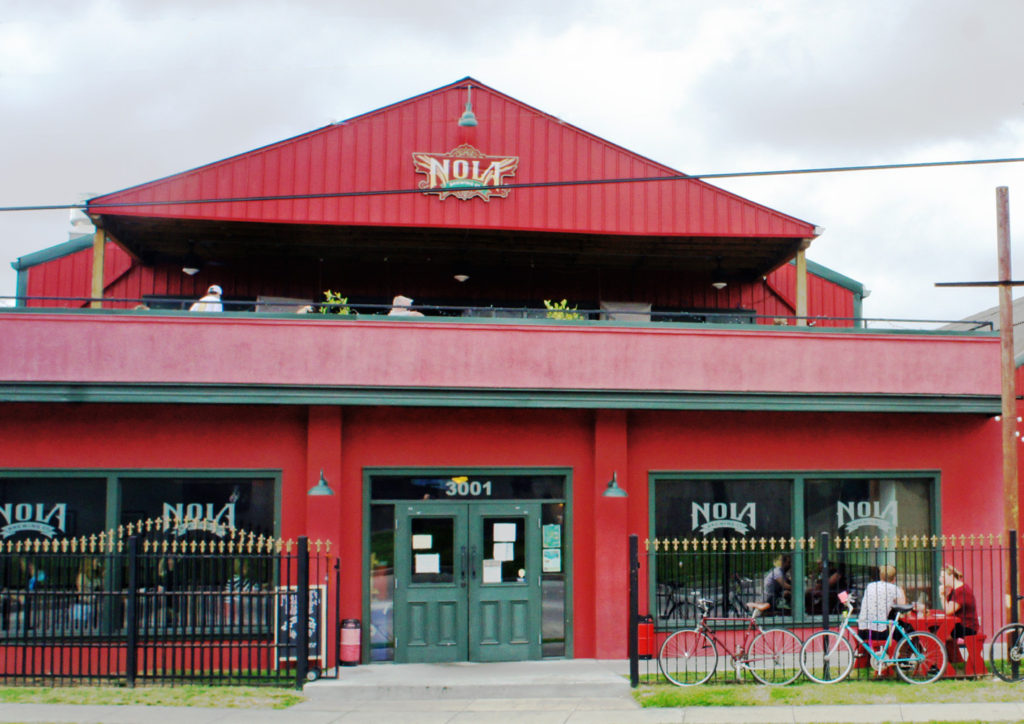
Brieux Carré doesn’t sell its beer anywhere else except at the tap, unlike New Orleans’s oldest craft brewery, NOLA Brewing (oldest, that is, if you don’t count the Crescent City Brewhouse on Decatur Street, which opened in 1991 as the first brewpub in Louisiana). The acronym NOLA usually stands for “New Orleans, Louisiana”, but here it’s short for New Orleans Lager and Ale, and the brewery takes pride in the fact that tourists can’t pronounce its address – Tchoupitoulas Street (named for a long-vanished tribe of local Indians). Its two-storey tap, down close to the Mississippi, must easily hold a couple of hundred people, including the rooftop patio area, though the view – a highway, a tall wall hiding the wharves on the other side – is industrial, at best. But the beers, such as Irish Channel stout (named for the nearby New Orleans district), are now available all around the south-east US, and all the ones I tried were well up to point. In particular, NOLA does an excellent line of sour ales.
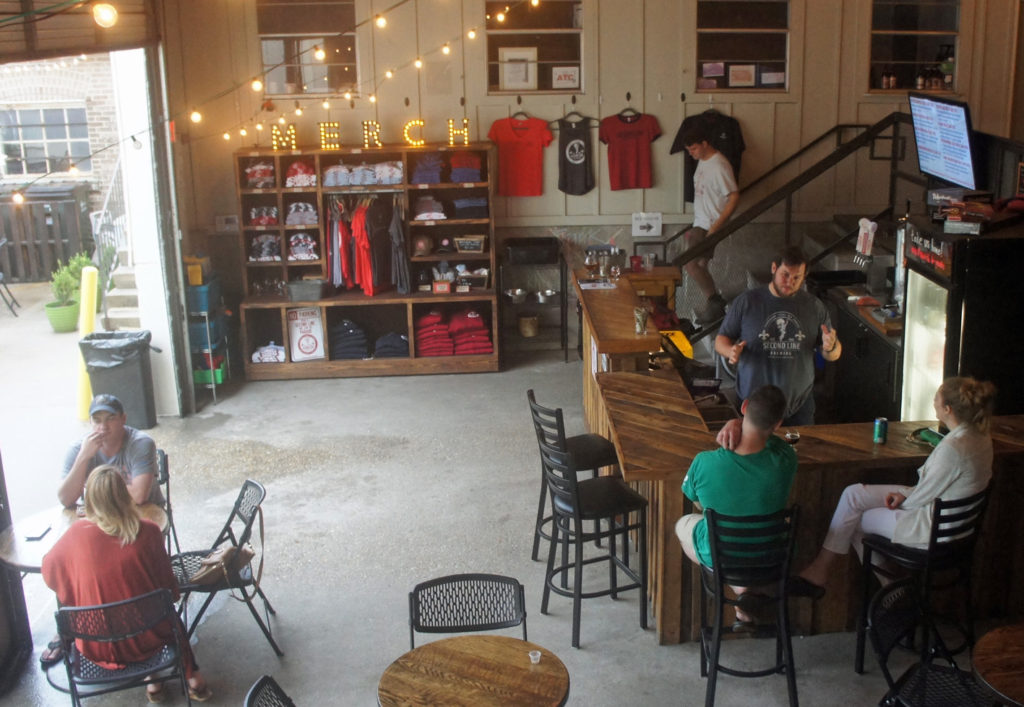
However, I’ve begun to realise I like my craft brewery taps on the fundamentally basic side, which is why I preferred the hard-to-find Second Line Brewing’s set-up: basic tables and folding chairs in what is still a large concrete yard at the front of their industrial premises. Second Line, which is named for the jazz band parades of New Orleans, started in July 2015, and has a good line of stouts, including an Imperial Russian flavoured with toasted coconut called Cease to Love, after the theme song of the “King of Carnival” in New Orleans (the link, apparently, is that the song was supposedly played to Grand Duke Alexei Alexandrovich of Russia, fourth son of Tsar Alexander II, when he was a guest at the Mardi Gras festivities in 1872), and A Saison named Desire, flavoured with blood orange juice (not as good a name as NOLA’s Hurricane Saison, however). Incidentally, it’s significant that, like every other Louisiana brewerry I saw, even the tiny Old Rail, Second Line had casks filled with ageing beer: if you’re not wood-ageing in the US now, it appears, you can’t compete.
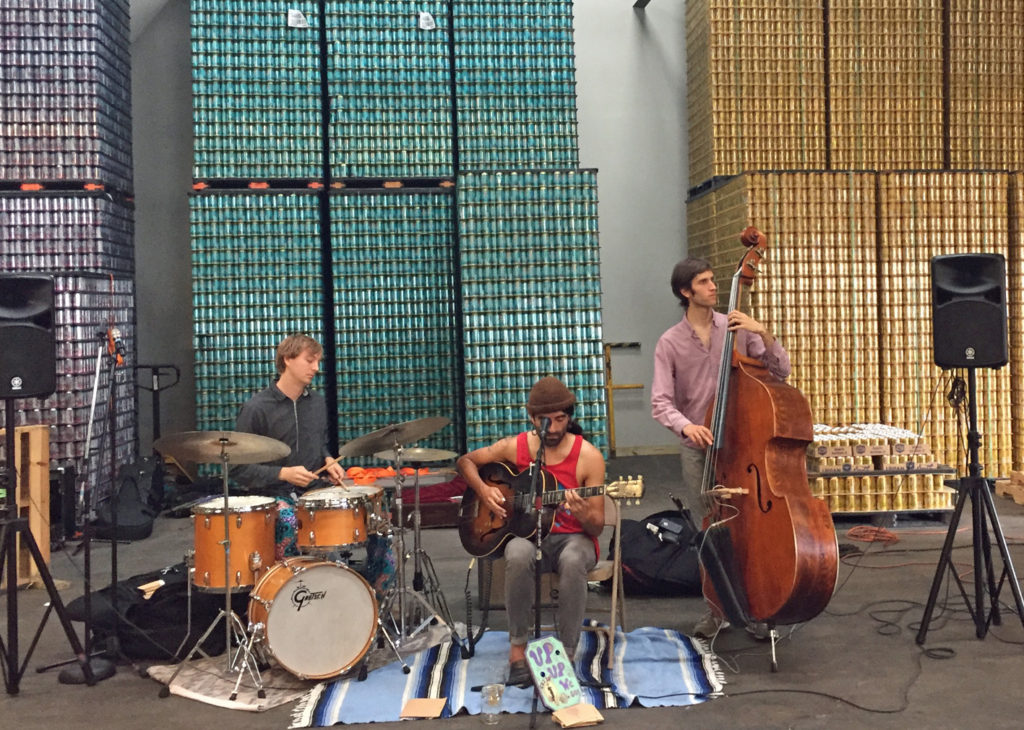
Urban South Brewing opened last year further down Tchoupitoulas Street towards the centre of New Orleans than NOLA, in a huge warehouse space that leaves enough room for all the brewing equipment, a games area featuring the peculiarly American sport of cornhole (tossing beanbags at a board with a hole in it), a large bar, a performance area for a band and 20 or so garden tables for drinkers. This is definitely a place to visit in a group, when a food truck is parked outside. The beers fit into the “expertly made even if they don’t fry your socks” slot, and that’s an absolutely fine place to be: it means you won’t be disappointed.
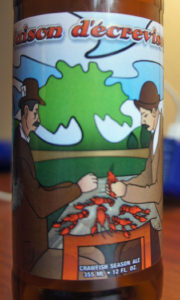
New Orleans breweries like to reflect New Orleans heritage in their beer names: Bayou Teche Brewing, in Arnaudville, south-west Louisiana, very specifically reflects its Cajun heritage in its brewing, which has heavy French and Belgian influences. The beers include Saison D’Écrevisses, “Crawfish Saison”, a fine 6 per cent “rye saison” made with French Aramis hops for drinking at crawfish boils; an excellent 7.5 per cent oak-aged liquorice stout called Loup Garou, French for “werewolf” (Loup Garou, naughty Cajun children are told, haunts the nearby swamps and will come for them if they continue to be bad); and Strawberry Alarm Hop, a 7 per cent IPA made with added strawberries and jalapeno peppers, which sounds utterly vile and is actually very, very good good, the three contrasting flavours working really well together – but since strawberries and black pepper is already a thing, why not?
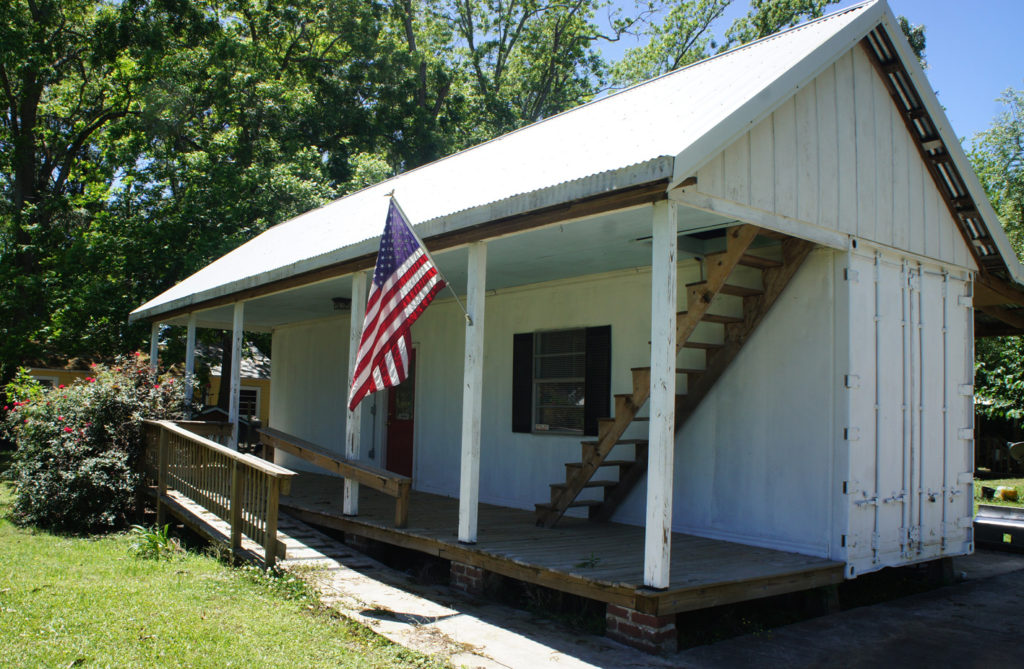
The brewery called after the nearby Bayou Teche waterway, was started by the three Knott brothers, Karlos, Dorsey and Byron, in 2009 in a disused 20-ft shipping container, moving eventually to a purpose-built brewery in 2013. If you visit the brewery, it’s likely you’ll be shown around by Floyd, the Knott brothers’ father. Should he start to tell you the joke about how Thibodeaux was working at the brewery when he fell in the fermenting vessel and drowned, and his friend Boudreaux had to ring up Thiboudeaux’s wife and tell her the sad news (ALL Cajun jokes feature characters called Boudreaux and Thiboudeaux, it’s the law), do laugh heartily at the punchline, even though you’ve heard the joke before: Floyd’s 81, please, he deserves your respect.
I didn’t get around many New Orleans bars, but here’s a swift trot through five I liked:
Black Penny Bar, North Rampart Street Many will hate this place, but its pretentious unpretentiousness, something only hipsters could pull off, made it strangely attractive. Drink Dat, a good but not, unfortunately, comprehensive guide to New Orleans drinking places says the Black Penny was previously a dive called the Ninth Circle, where “your mother would not be happy”. I don’t think Ma would be thrilled to be taken to the Black Penny, either, unless she was a big fan of craft beer in cans, or cocktails. It’s dark, the walls are bare brick and rough wood, and it doesn’t have draught beer at all, but its range of more than 100 different bottled and canned brews should satisfy the fussiest, and if it doesn’t there’s the usual New Orleans bar big line-up of spirits and liqueurs to make any cocktail you can think of, while the staff are pally and, despite being on the borders of the French Quarter, customers seem to be mostly locals rather than tourists.
dba, Frenchmen Street A cracking music venue with a top-notch craft beer selection: 20 taps and a wide range of bottles. If there’s a good band on, you’ll be charged to get in, but this is New Orleans, it will be worth the money. The interior is reminiscent of a London “island bar” pub, with two long rooms either side of the servery, and the stage where the musicians play is at the end of the left-hand room.
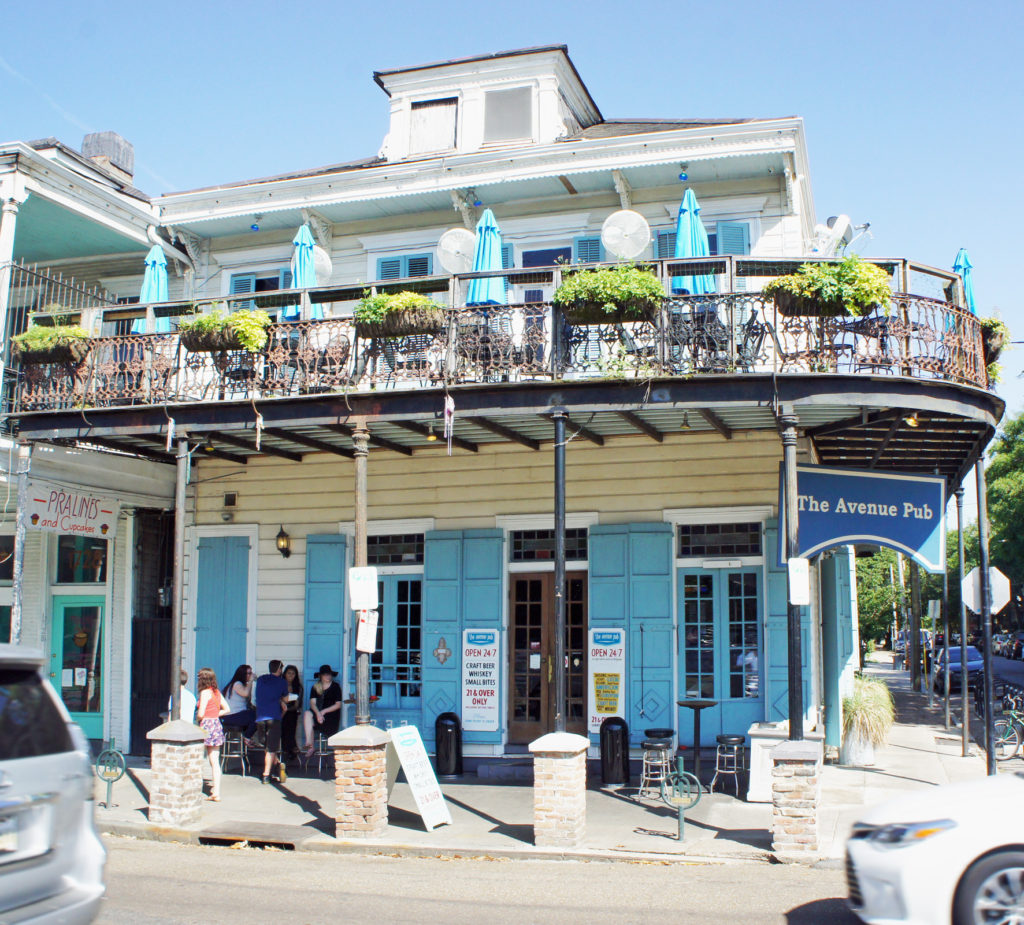
Avenue Bar, St Charles Avenue Touted as the best craft beer bar in New Orleans, this is a 15-minute streetcar ride down St Charles Avenue from the city centre. Strangely, when I was there, it seemed to be attracting numbers of young drinkers who only wanted Miller: why, when there were getting on for 40 different draught craft brews available, seems unfathomable. Certainly the wide range is a good reason for visiting, and it’s an attractive place, but I found it hard to see why commentators are quite so enthusiastic about the place: maybe I wasn’t on the right frequency that day to pick up the vibe.
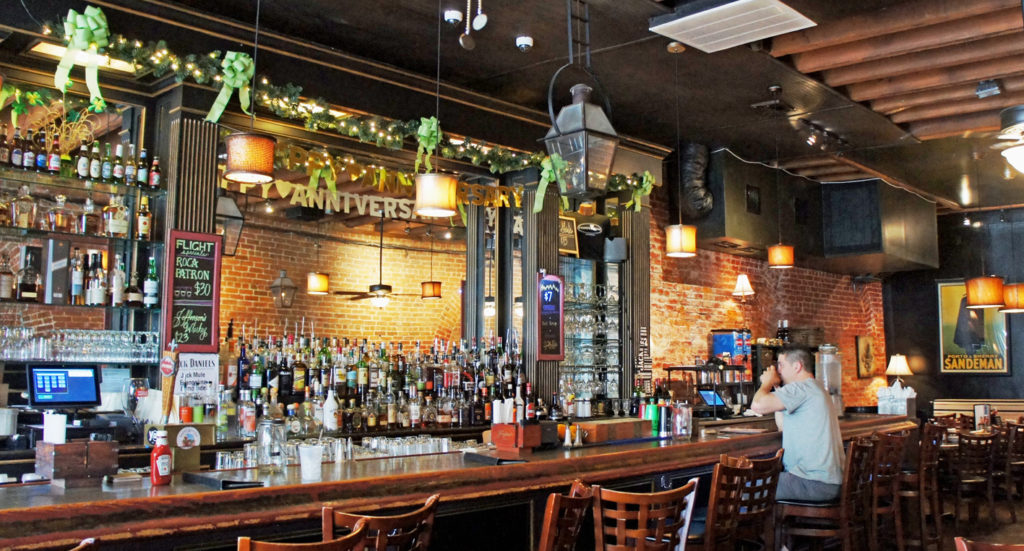
Evangeline, Decatur Street I like a bar where I walk in for a second time four days after my first visit and the barman not only remembers me, but what beer I drank previously. Evangeline edges more towards being a restaurant than a bar, but it sells eight or so craft beers, including several I didn’t see elsewhere, such as the Mississippi Fire Ant Imperial Red Ale from Southern Prohibition Brewing in Hattiesburg, Mississippi that the bartender clocked me for. The long, narrow room is done in typical mahogany-and-mirrors New Orleans style, with high ceilings and plenty of lights. Evangeline (named, I’m guessing, for the tragic Longfellow poem about the Acadian maid who lost her lover and only found him again in old age) is also an excellent destination if you’re after Cajun cuisine in New Orleans: try the gumbo, it’s yumbo.
Industry Bar and Kitchen, Decatur Street Almost diagonally across the street from Evangeline, the Industry Bar is different in every way, apart from a good selection of local craft beers: it’s meant to be a place for late-night workers in the hospitality trade to come after work, apparently, and my experience was that it’s one of the rare places where you can find speedy, filling late-night food in New Orleans. (Yes there are lots of restaurants, but it will be an hour’s wait to be seated, at least, normally.) The decor is, um, industrial, but that’s an invigorating change from the neighbours.
(I went to Louisiana with Nancy Covey’s Festival Tours, and had a couple of brewery trips while I was there with NOLA Brew Bus: hat-tips to both for their excellent organisation.)
PICTURE GALLERY (click to embiggen)
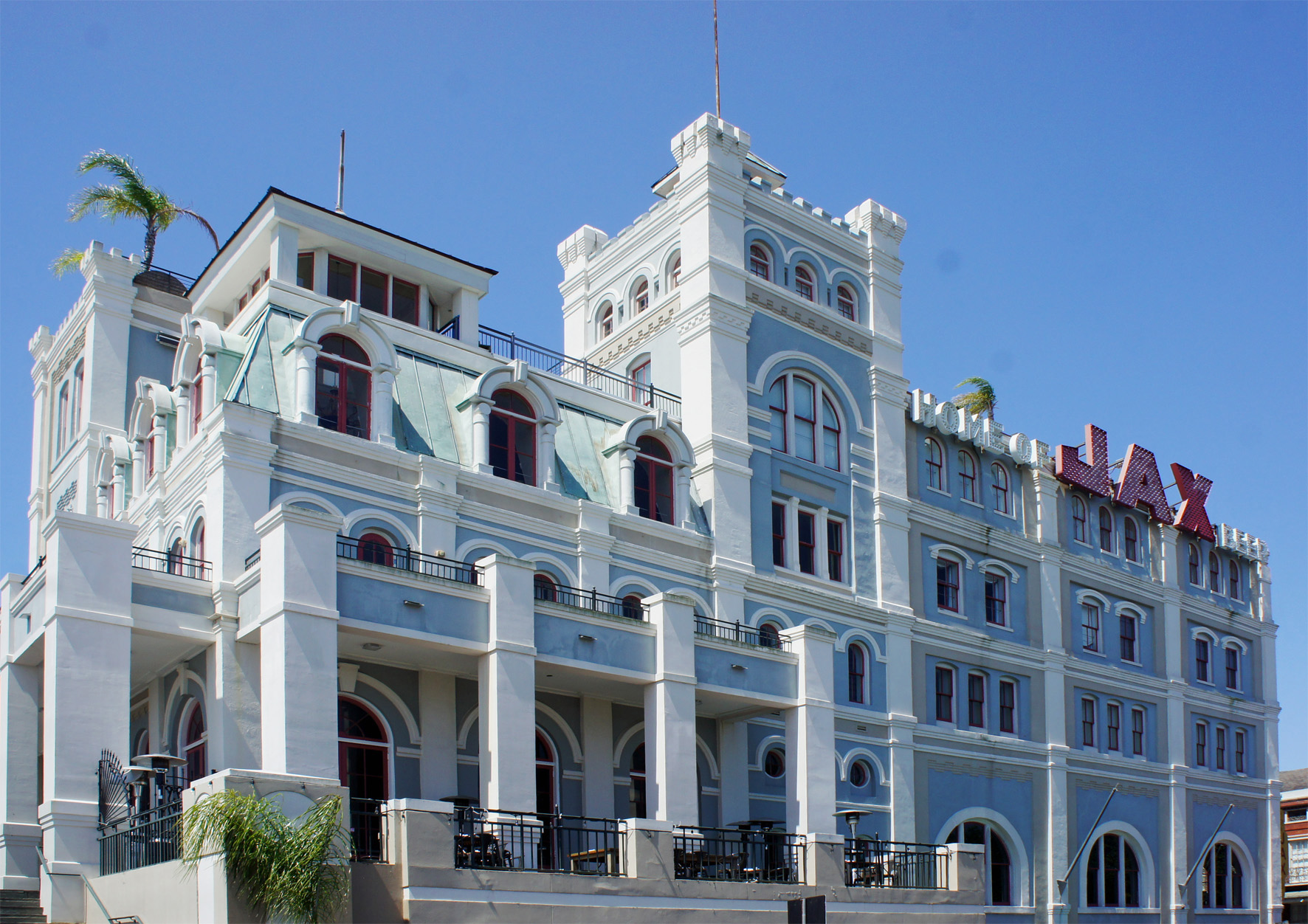
















Did you catch the original line-up of The Meters at the jazz fest?
Sadly not, they were on the second weekend, after I had gone home
Thanks for sharing, Martyn! Cheers from Brasil!
Another good post thanks. Just back from the other part of French influenced North America , Quebec. Wow it has embraced craft brewing with a passion. Quebec City alone has over 10 craft brew bars centrally placed, all walkable, and 10 others close by (bus or taxi) ; most brew their own, and the first of the many I visited gave me a helpful little free promotional brew “passport’ map. Highlights included a CASK bitter brewed on the premises and at another a dark mild (keg). Saw a beer festival ad for July with over 300 Qubec brewed beers promised.
New Orleans local and long time reader. Sounds like quite a trip, and certainly not like the usual tourist experience. I hope you enjoyed your stay, and it sounds like you did. Since you were here, two more breweries have opened in New Orleans, both 30 barrel systems.